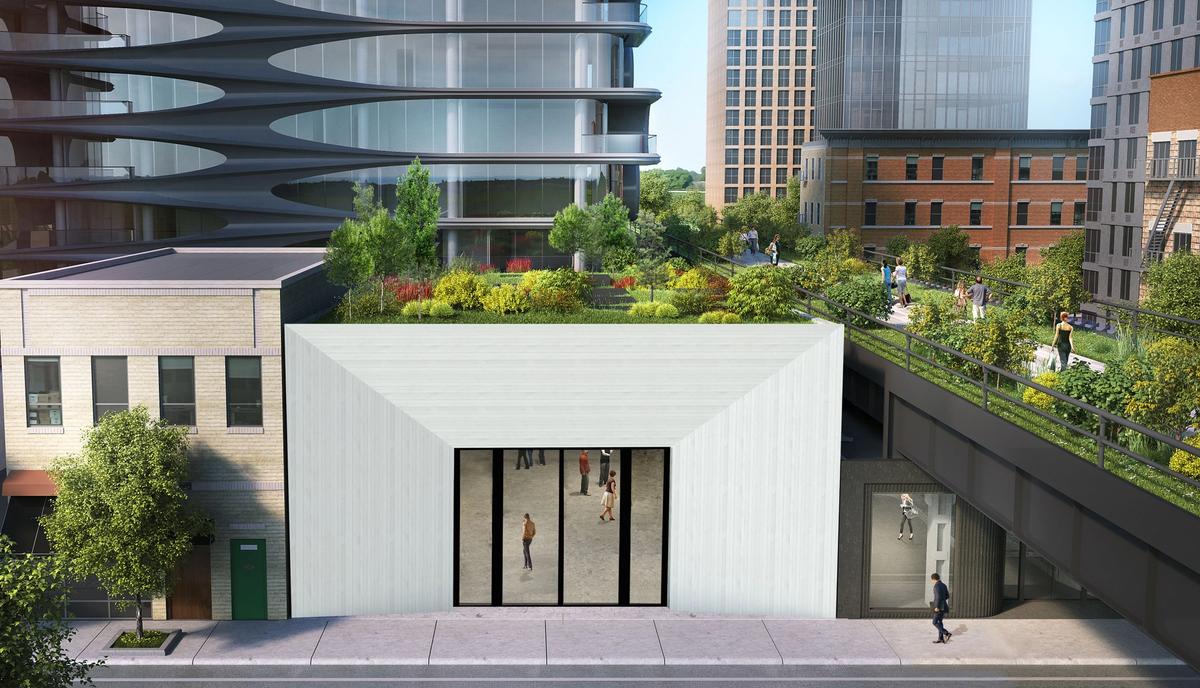In recent years, falling foot traffic coupled with a rise in online sales have prompted art dealers to question the once-trusted gallery storefront model, which is increasingly seen as not only archaic but also financially unnecessary—if not completely untenable as urban rents soar. Yet that is not the case in Chelsea, New York’s commercial art hub for the past 25 years and one of the priciest neighbourhoods per square foot in the entire US.
This fall, several area dealers are launching new and improved shopfronts, some of which represent their second—if not third or fourth—space within a half-mile radius. The frenzy of growth represents a small renaissance on the heels of several years of high-profile gallery closures in the area, spurred in part by the exhaustive commercial and real estate development on the city’s West Side.
Lehmann Maupin opened its Peter Marino-designed space at 501 West 24th Street on 6 September, which marks its second in Chelsea, just two blocks north of its existing location and adjacent to the High Line. According to the gallery’s co-founder Rachel Lehmann, the area’s square footage may not be the cheapest option, but it still represents the best value per dollar. “It’s very expensive. If you don’t want to take any risks, then this isn’t the investment you want to make,” she says. “It’s a calculation that we made, and we think the exposure will pay off.”
The gallery decided to buy and build its own space in Chelsea when its former secondary Manhattan outpost on the Lower East Side closed in 2017 after the building was sold. Lehmann says the gallery never considered investing in property anywhere else because it was getting the “foot traffic we wanted” in Chelsea. “Some people asked why we didn’t expand our Hong Kong gallery since it’s smaller,” she says. “The answer is simply because this is still the global center of the art world.”
Likewise, Paul Kasmin Gallery will open a fourth location in Chelsea on 10 October at 509 West 27th Street. It is a stone’s throw from another Kasmin space on 515 West 27th Street. The building, which was gutted and redesigned by the New York-based architecture firm StudioMDA, will feature a 5,000 sq. ft rooftop sculpture garden visible from the High Line park as well as ample natural light inside thanks to 28 skylights.
The expansion “allowed us to envision what we wanted in a purpose-built space rather than a renovated or rebuilt unit—we have great spaces but this is the next level”, says Nick Olney, the director of the gallery. He adds that, over the years, "the northern side of Chelsea—particularly 27th Street—has become more and more the centre of Chelsea”.
It is reasonable to assume that the cause of this incremental northbound migration toward the upper 20s on Manhattan’s West Side is linked to the greater Hudson Yards project. Indeed, Lehmann says that when the gallery opened its first Chelsea space on West 26th Street in 2000, “it was difficult to get collectors and visitors to walk even a few more blocks up” from the galleries clustered around 23rd Street.
Filled with luxury high rises and ample amenities, including the Shed arts center due to open in 2019, Hudson Yards is the largest private real estate development in American history. Though 25% of the project’s residential units are required to be set aside as affordable housing by the city of New York, it is attracting a spectacularly wealthy clientele. For instance, rents at the One Hudson Yards apartment building at 530 West 30th Street, which opened in 2017, start at $5,400 a month; area condo prices command around $3,000 per square foot on average.
Helpfully, Chelsea’s rents have dipped over the past few years after a period of rapid inflation that was quelled by a post-Hurricane Sandy market adjustment, Artnet News reports. This has led several dealers to capitalize on the below-market real estate rates in the hope of taking advantage of the influx of cash-flush foot traffic on the West Side.
Hollis Taggart moved to the seventh floor of 521 West 26th Street in 2015 after nearly 40 years of operation on the Upper East Side. When the street-level unit of the building opened up this year, he quickly jumped on the opportunity to move in, officially opening his new space on 6 September. “Even long-time collectors sometimes wouldn’t take the elevator up to the seventh floor,” he says. “I’ve already noticed a difference in the number of people coming in.”
Taggart also moved his inventory from a storage facility in Long Island to a space across the street where he set up an additional private viewing room. He exclusively told The Art Newspaper that he would launch a third space dedicated to showing more contemporary art in the newly opened High Line Nine Galleria on 13 September.
Younger and smaller galleries are moving into the neighbourhood as well. Brooklyn-based gallery Victori + Mo recently announced that it would move to Chelsea while Burning in Water gallery, opened in 2015, will join Taggart in the High Line Nine with two new spaces.
Kasmin’s Olney, whose new space backs up to the High Line Nine, sees his own real estate developments as well as others as paving the way for the future of Chelsea, hopefully drawing visitors from Hudson Yards. “Projects like High Line Nine will surely change how people navigate the neighbourhood and draw more people into the middle blocks,” he says.
Taggart agrees, noting that he has already seen a shift in the demographic of visitors making their way through Chelsea: “It seems like a good time to take some new risks.”


